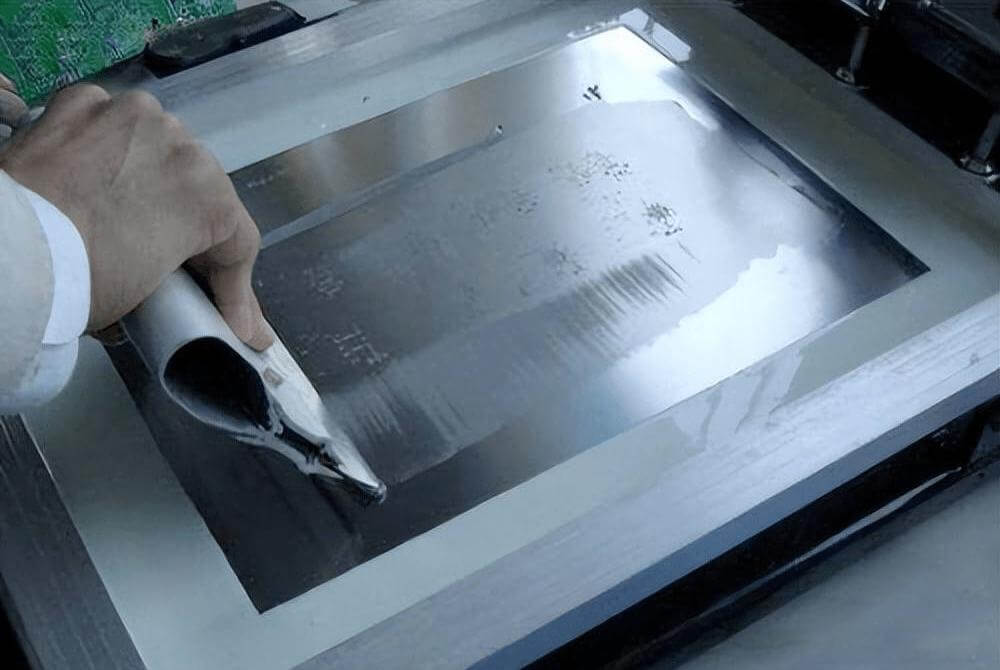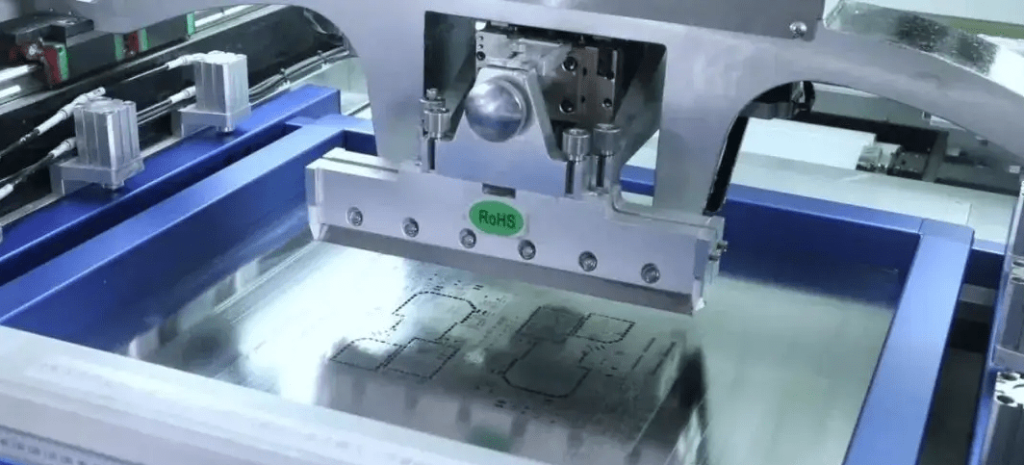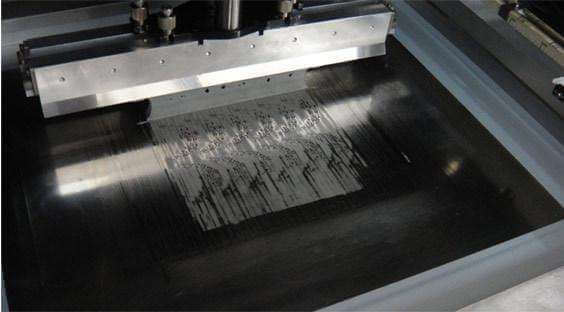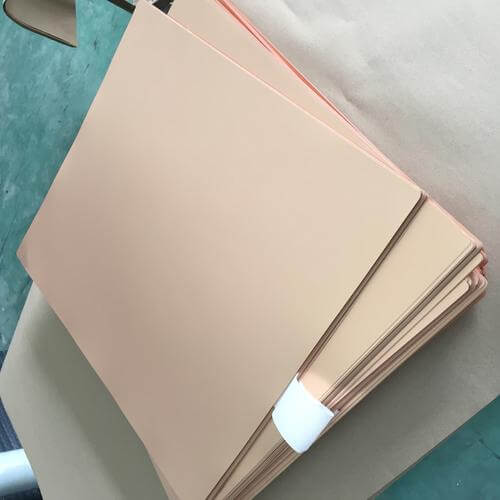Solder paste printing can be a tricky part of the SMT process, causing problems for many working with PCB assembly. Have you ever faced issues like stencil bridging, solder balling, or uneven paste deposits?
These problems can slow down your production and cost you money. But don’t worry at all as this article is here to help you. It will give a rundown of everything concerning solder paste printing, from common problems to how best to fix them, all the way through to tips for making your process better.
By the end, you will be prepared to meet any challenge of solder paste printing and defeat it easily.
So, let’s get started.
What is Solder Paste Printing

Solder paste printing is an important step in making electronic devices. The solder paste printing process involves placing sticky solder particles mixed with flux onto specific areas on a circuit board where, at a later stage, components have to be attached.
First off, there is this stencil having holes that will correspond to the spots on the board. This helps to only put solder paste where needed. Carefully lining up the board and the stencil ensures everything is in its place.
During the printing process, it is pushed through the stencil holes onto the board by a tool called a squeegee. This process is carefully done to ensure that each spot gets the right amount of paste for good soldering.
It may then be checked with a machine to verify whether the board has problems such as too little or too much solder paste right after printing. This check ensures the solder paste was applied correctly.
Solder paste printing is a crucial process in electronics as it prepares the board for placing components. It outlines the requirement of accuracy and instrumentation in ensuring proper functioning and interfacing of parts.
Advantages and Importance of Solder Paste Printing
There are many reasons why solder paste printing can greatly facilitate the Surface Mount Technology assembly process:
- Speed:Automation leapfrogs manual methods in the deposition of solder paste and gives added speed to the assembly process, reducing production time while increasing throughput.
- Accuracy: Stencils with precise apertures ensure consistent and accurate placement of solder paste on PCBs, minimizing the risk of misalignment or solder bridging.
- Consistency:Because parameters are printed, squeegee pressure and speed can help provide uniformity of the paste deposit from one PCB to another for consistency in solder joint quality for production runs.
All these benefits increase not only the efficiency of manufacturing but also the reliability and performance of electronic assemblies to the most stringent requirements of modern technology applications.
Potential Problems in Solder Paste Printing
Though solder paste printing has a number of advantages, some common issues that this process may encounter are:
- Stencil Bridging: This happens when the solder paste spreads between two adjacent stencil openings which eventually causes short circuits. Check proper positioning of the stencils; clean them very well and adjust the thickness of the solder paste.
- Solder Balling: Small solder balls may form on the PCB or stencil, which could be electrically problematic. Apply the right mix of solder paste; set up printing conditions, pressure, and speed; and select the appropriate tools to get rid of them.
- Insufficient Paste: If not enough solder paste is applied, joints might not be strong. To avoid that, check the thickness and size of the stencil; adjust the printing settings to provide a better quantity of paste, and keep the stencil clean and flat.
Applications
Solder paste printing has countless applications within different industries, including:
- Consumer Electronics: Used in the manufacturing of smartphones, tablets, and laptops among other consumer gadgets where compact design and high reliability are crucial.
- Medical Devices: Critical for assembling medical equipment such as diagnostic devices, monitors, and implantable devices, ensuring precise and durable electronic connections.
- Automotive Parts: Applied in automotive electronics for components like control units, sensors, and navigation systems, where robustness and performance under harsh conditions are necessary.

Solder Paste Printing Process
For successful solder paste printing, consider these key factors during the design process:
Stencil Design
Stencil design is crucial for precise solder paste application. The aperture size controls how much paste is deposited, matching component sizes on the PCB. Stencil thickness affects paste flow: thinner stencils offer finer control, while thicker ones suit larger components.
Made from durable stainless steel, stencils are easy to clean and ensure long-term reliability.
Paste Selection
Choosing the right solder paste is vital for strong solder joints. The alloy composition must match PCB and component materials for proper bonding.
Different alloys offer varied melting points and strengths, tailored to specific needs. Flux type in the paste aids solder wetting and prevents oxidation during soldering, ensuring lasting electronic connections.
Printing Parameters
Adjusting printing parameters ensures consistent paste application. Squeegee pressure determines paste transfer force, crucial for even deposits. Print speed controls how fast paste spreads, affecting thickness.
Separation speed lifts the stencil cleanly after printing to avoid smearing, ensuring sharp, defined deposits. Fine-tuning these settings is key to minimizing defects.
Cleaning Procedures
Effective cleaning maintains stencil performance. Stencil cleaning removes leftover paste, preventing aperture clogs. Regular inspection checks for defects that could affect print quality.
Proper storage and handling prevent contamination and maintain paste and stencil integrity. These practices ensure reliable, high-quality solder paste printing in electronic manufacturing.

Optimization Techniques
To optimize solder paste printing for specific needs like fine-pitch components or high-density PCBs, follow these strategies:
- Fine-Pitch Components: Use stencils with small openings and precise alignment for accurate paste application.
- High-Density PCBs: Opt for thinner stencils and adjust squeegee pressure to accommodate tight spaces between components.
- Stencil Cleaning: Regularly clean stencils using suitable solvents to prevent paste buildup and maintain performance.
- Equipment Maintenance: Check and replace worn squeegee blades to ensure consistent printing quality.
Quality Control
Maintain product reliability through effective quality control measures:
- Visual Inspection: Immediately check for issues like insufficient paste or solder bridging after printing.
- Automated Optical Inspection (AOI): Use camera systems to detect solder joint defects accurately and quickly.
- Implementing these checks helps catch problems early, reducing rework and improving overall quality.
Final Words
In summary, solder paste printing is crucial for assembling electronic devices using Surface Mount Technology (SMT). It speeds up production and ensures precise solder application on PCBs. While it offers benefits like speed, accuracy, and consistency, challenges such as stencil bridging or solder balling can occur.





